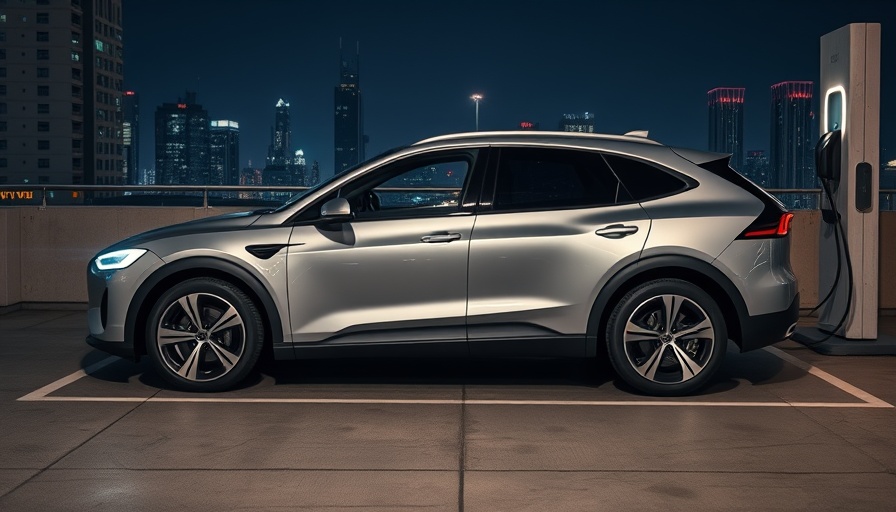
The Revolutionary Shift Toward Solid-State Batteries
As we approach 2025, the automotive landscape is on the brink of transformation, driven chiefly by advancements in solid-state batteries (SSBs). Unlike conventional lithium-ion batteries (LIBs) that have dominated the market for years, SSBs promise a leap in energy storage technology that could fundamentally alter electric vehicle (EV) performance, safety, and sustainability. This evolution is critical as the automotive industry seeks new solutions to address environmental concerns and growing demand for electric vehicle efficiency.
Understanding Solid-State Batteries
Solid-state batteries work differently than their lithium-ion counterparts. Instead of flammable liquid electrolytes, SSBs utilize solid ceramic or polymer electrolytes. This innovation allows for a remarkable increase in energy density, with potential ranges surpassing 600 miles on a single charge—significantly higher than traditional EVs. Toyota is leading the charge with projections of its SSBs achieving rapid charging within 10 minutes, presenting a real alternative to gasoline-powered vehicles.
Environmental Implications and Supply Chain Challenges
Beyond performance, the environmental impact of battery production is a major consideration. As the industry shifts towards SSBs, questions about sourcing materials like lithium and sulfur arise. It’s essential for automotive manufacturers to consider the sustainability of their supply chains, as they navigate Scope 2 and Scope 3 emissions reductions. These are critical as the world pivots toward greener technologies. Automakers are now faced with the challenge of ensuring that the processes involved in manufacturing batteries align with sustainable practices.
Industry Moves to Commercialization
Global automakers, including Toyota, Stellantis, and Hyundai, are eagerly pursuing the commercialization of solid-state technology. Stellantis and Factorial Energy have already made strides with 77Ah SSB cells, boasting 375 Wh/kg energy density while operating under extreme temperatures. Hyundai plans to showcase its first prototype powered by SSBs by the end of 2025. As competition heats up in the race for advanced automotive technology, the collaboration and rivalry between these the automotive giants accelerate innovation.
Challenges Facing Solid-State Battery Adoption
Despite their promising advantages, SSBs are not without obstacles. Dendrite formation at lithium-metal anodes continues to pose significant risk, as does the moisture sensitivity of sulfide electrolytes, which requires costly dry-room production facilities. Current production costs for SSBs remain 2-3 times higher than those of lithium-ion batteries, but advancements like gigacasting may help close this gap significantly by 2030. Addressing these challenges is essential for greater adoption and implementation of SSB technology.
The Future of Electric Mobility
The transition towards solid-state batteries represents not just a technical evolution but a paradigm shift in how we think about electric mobility. As these advancements unfold, understanding the implications for vehicle performance, environmental sustainability, and the automotive market becomes increasingly crucial. Observers and industry insiders alike are eager to see how these technological innovations will reshape the landscape of personal and commercial transportation.
Making Informed Choices in Automotive Technology
For consumers keen on the latest automotive technology developments, understanding the differences between solid-state and lithium-ion batteries can lead to more informed car buying and maintenance decisions. Automotive technology insider tips are valuable now more than ever as we approach a new era of vehicle advancements. Engaging with reliable sources and experts in the industry can provide insights and foresight into what to expect in the rapidly changing automotive landscape.
Conclusion
In conclusion, the advancement and implementation of solid-state batteries represents not merely a technological leap, but a vital response to pressing environmental challenges facing our global community. As manufacturers grapple with scaling production and overcoming barriers, consumers must stay informed about these developments. Now is the time to embrace change, educate oneself about technological advancements, and advocate for sustainable practices in the automotive industry.
 Add Row
Add Row  Add
Add 




Write A Comment